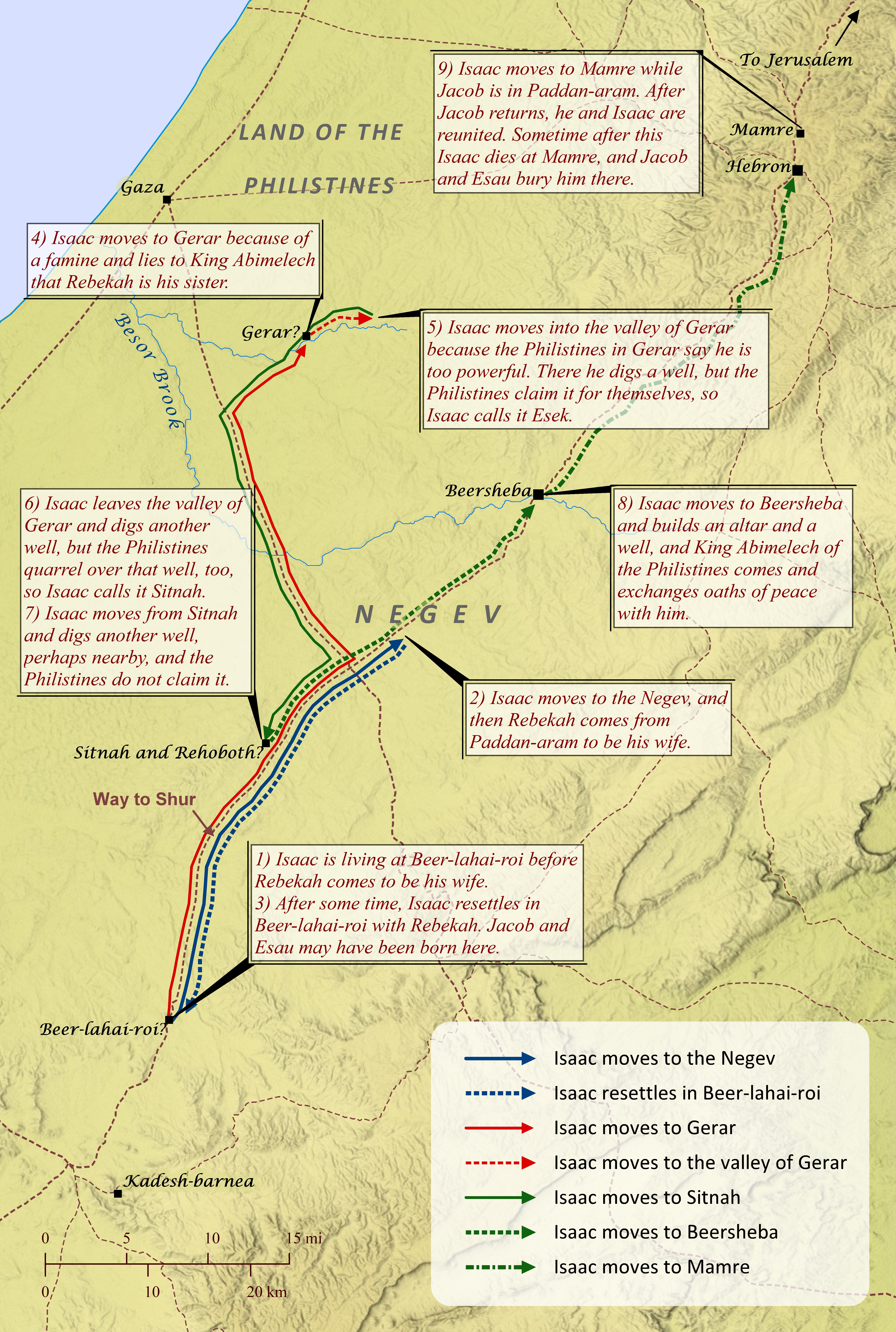
Isaac’s Travels
Genesis 21-35
Though the patriarch Isaac moved from place to place several times within southern Canaan, compared to his father Abraham and his son Jacob, Isaac appears to have been a bit of a homebody. In fact, unless Isaac resettled in places not recorded in Scripture, the farthest extent he ever traveled appears to have been only about 90 miles (113 km). Yet, as the child of God’s promise to Abraham to build a great nation from his descendants, Isaac’s relatively simple life served as a critical bridge from Abraham to the beginnings of the twelve tribes of Israel, who were descended from Isaac’s son Jacob. It is likely that Isaac was born at Beersheba (see Genesis 21:1-24), and later Abraham offered him as a sacrifice on Mount Moriah (located at Jerusalem; see 2 Chronicles 3:1). Then Abraham, Isaac, and those with them returned to Beersheba (Genesis 22:1-19). When Isaac reached adulthood, his father sent a servant to bring back a bride for him from Aram-naharaim, far north of Canaan. When his bride, Rebekah, arrived, Isaac had just come from Beer-lahai-roi and settled in the Negev (Genesis 24:62). Later Isaac resettled with Rebekah in Beer-lahai-roi, and this may have been where their twins son Esau and Jacob were born. A famine forced Isaac to go to Gerar (Genesis 26:1-6) in “the land of the Philistines.” The distinct people group known as the Philistines in later books of the Bible did not arrive until the time of the Judges, so the term here must have referred to another people group living in this region, and this is supported by the fact that King Abimelech’s name is Semitic, not Aegean (the likely origin of the later Philistines). While Isaac was there, he repeated his father’s error (Genesis 20) by lying to the king that his wife was only his sister. Isaac also became increasingly prosperous at Gerar, so the Philistines told him to leave their region. Isaac moved away from the town of Gerar and settled further away in the valley of Gerar. There he dug a well, but the Philistines claimed it for themselves, so he called it Esek, meaning “argument.” So Isaac’s men dug another well and called it Sitnah (meaning “hostility”), but it led to more quarreling, so he dug yet another well and called it Rehoboth (meaning “open space”). The locations of these two later wells are not certain, but they may have been located near Ruheibeh as shown on this map. Then Isaac moved to Beersheba and built an altar. He also dug a well there, and King Abimelech of the Philistines came and exchanged oaths of peace with him. It was likely at Beersheba that Isaac blessed his sons Esau and Jacob, and both sons eventually left Canaan (see “Jacob Goes to Paddan-Aram” map). When Jacob later returned, he traveled to Mamre near Hebron and reunited with Isaac. Sometime after this Isaac died, and Jacob and Esau buried him there.